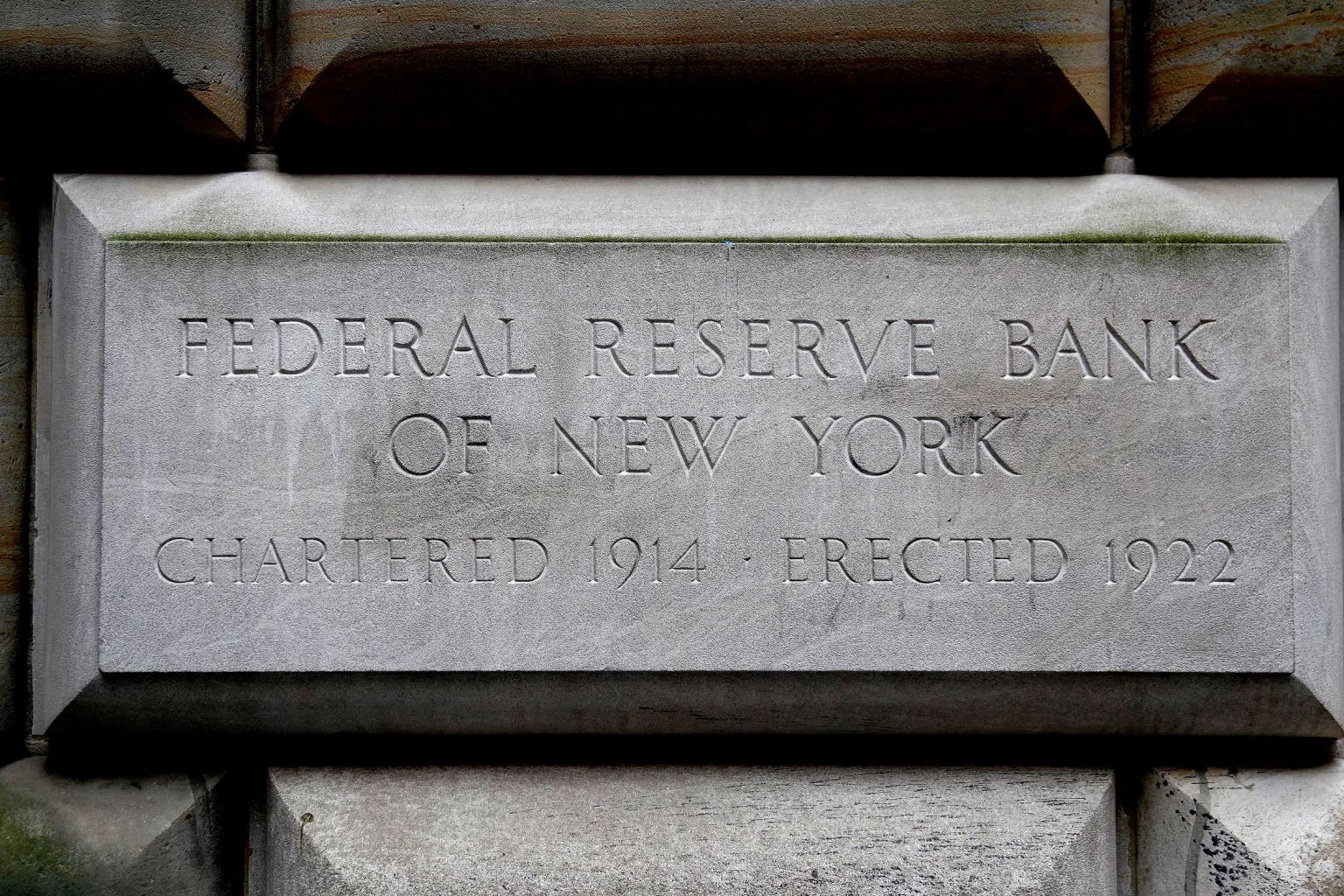Fed policymakers agree rates on hold for 'a time'
Sign up now: Get ST's newsletters delivered to your inbox

The cornerstone for the Federal Reserve Bank of New York.
PHOTO: REUTERS
Follow topic:
WASHINGTON (REUTERS) - US Federal Reserve policymakers agreed in their final policy meeting of 2019 that interest rates were likely to stay on hold for "a time" as the central bank set its sights on a new articulation of its monetary policy framework.
Minutes of the Fed's Dec 10-11 policy meeting, released on Friday (Jan 3), also showed policymakers were preparing to discuss changes to the way it manages liquidity in financial markets, including a possible standing repurchase facility.
The Fed's meeting minutes often lay out opposing camps in the discussion of whether to shift its stance of monetary policy at that meeting.
But not the minutes for its last meeting, a reflection of the firm consensus at the central bank at the end of 2019 that it had done enough to shield the economy from a downturn by cutting rates several times that year.
"Participants judged that it would be appropriate to maintain the target range for the federal funds rate," according to the minutes.
Similarly, the minutes noted that policymakers regarded the current rate stance "as likely to remain appropriate for a time"as long as the economy stays on track.
US stock prices held onto losses after the minutes were released, with financial markets generally roiled after a US air strike killed Iran Quds Force chief Qassem Soleimani, increasing tensions between the two countries.
FOCUSING ON THE FRAMEWORK
Part of the Fed's meeting in December focused on what has become a long discussion on how to best manage monetary policy.
Policymakers agreed that they would not "reaffirm" a statement on the Fed's long-term goals in January as has become routine in recent years.
"The Committee plans to revisit this statement closer to the conclusion of the review, likely around the middle of 2020."
The minutes also said various policymakers proposed discussing at future meetings topics including a "potential role of a standing repo facility" as well as "the setting of administered rates" and the long-run composition of the Fed's Treasury holdings.
After a surprise squeeze in bank funding markets in September sent overnight borrowing costs for banks to as high as 10 per cent - more than four times the Fed's lending rate at the time - the Fed launched daily liquidity operations to prevent the financial system from seizing up.
Since then, the central bank has provided roughly US$50 billion (S$67 billion) a day in overnight and short-term credit to banks through repurchase agreements, or repo deals. In October, it then moved to permanently expand the size of its balance sheet - and boost the level of bank reserves - by purchasing US$60 billion a month in Treasury bills.
The year-end period was of particular concern for both the Fed and Wall Street because it typically sees a high level of demand by banks to secure adequate reserves to close out the year. At the end of 2019, the Fed injected roughly US$250 billion to prevent rates from repeating September's upward spiral, and it appears to have thwarted the feared spike in borrowing costs.
Having dodged a year-end funding squeeze, though, Fed officials must soon decide how long to continue the daily repo operations and if they should implement a permanent repo facility in their place. They must also decide how long to keep up their Treasury bill purchases, currently pledged to continue through the first quarter.
At the Dec 10-11 policy meeting, a Fed staff member told policymakers that repo operations might be needed at least through April.
The staff member also said future Treasury bill purchases could have larger impacts on bill market liquidity. If that were to occur, the Fed "could consider expanding the universe of securities purchased for reserve management purposes to include coupon-bearing Treasury securities with a short time to maturity."

